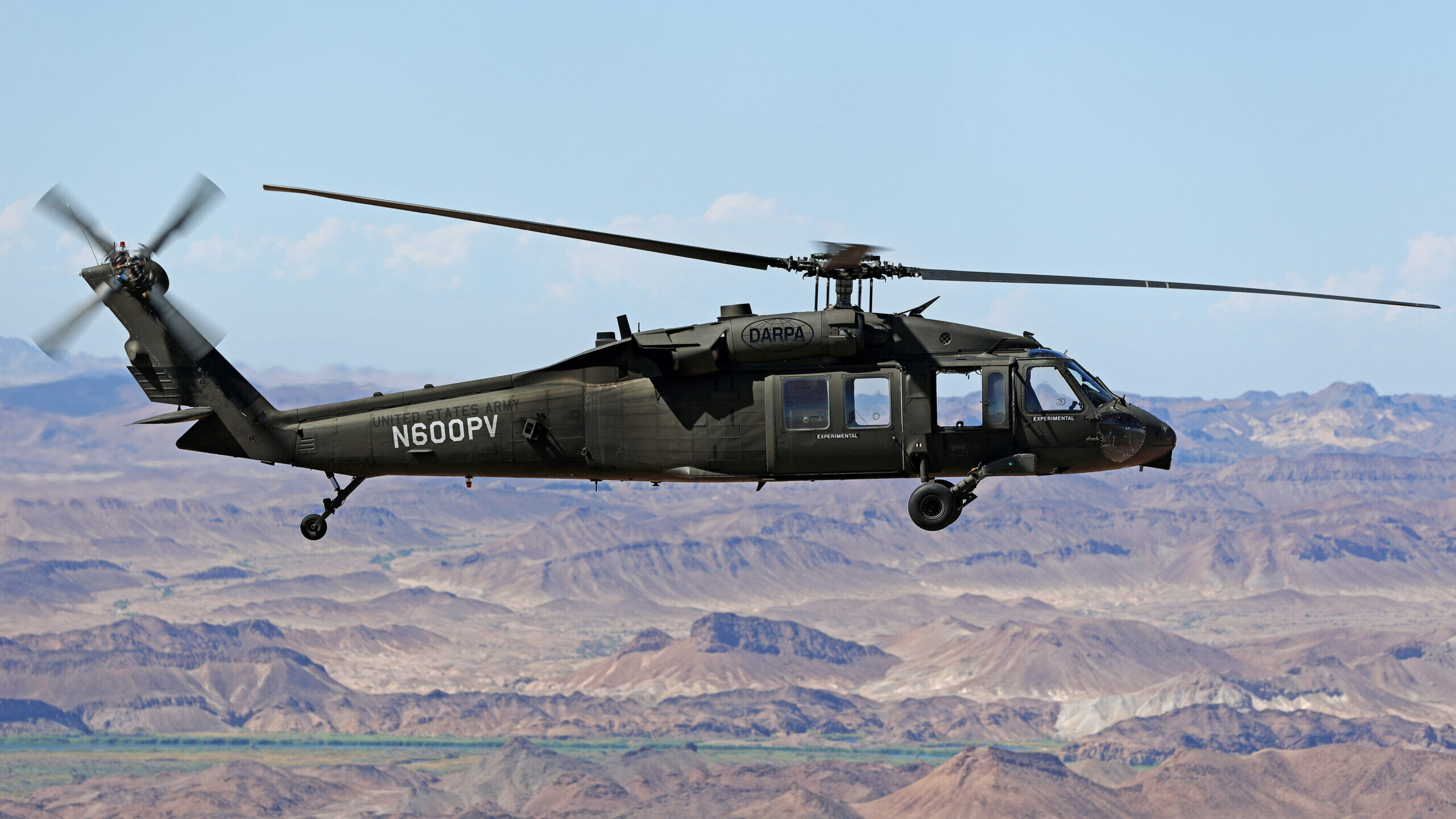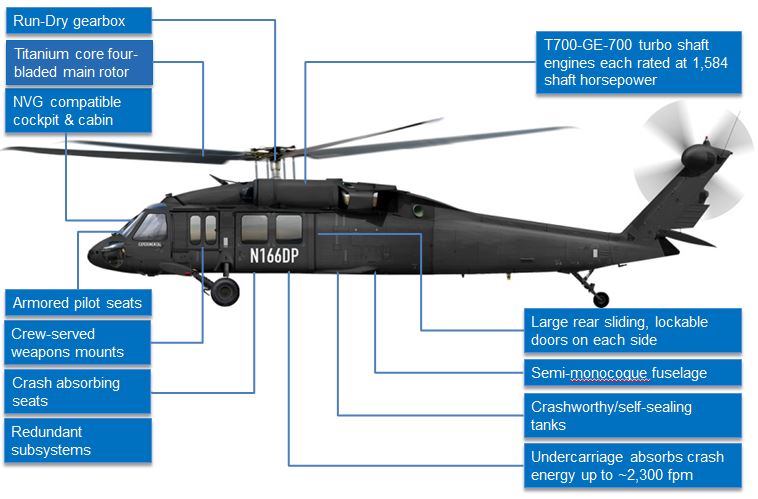Exactly how the UH 60 Enhances Helicopter Fleet Capabilities for Tactical Units
Exactly how the UH 60 Enhances Helicopter Fleet Capabilities for Tactical Units
Blog Article
UH-60: Innovations in Modern Helicopter Layout
The UH-60 helicopter stands as a criteria in modern aviation, showcasing significant developments in design and modern technology that cater to the progressing demands of army operations. Its consolidation of advanced materials not only boosts efficiency yet additionally addresses vital safety concerns. The integration of advanced avionics has actually changed functional capabilities, enabling for higher situational recognition and decision-making effectiveness. As we discover the evolution and vital advancements of the UH-60, it ends up being vital to consider just how these growths affect not only current applications however also the future landscape of helicopter layout.

Development of the UH-60
The evolution of the UH-60 Black Hawk helicopter stands for a considerable milestone in aerospace engineering and armed forces air travel. Introduced in the late 1970s, the UH-60 was created by Sikorsky Airplane to satisfy the USA Military's need for a flexible energy helicopter efficient in executing a selection of goals. Its design emphasized speed, ability to move, and sturdiness, establishing brand-new standards for operational performance.
The UH-60 features an unique four-blade rotor system, which improves lift and security, allowing it to operate efficiently in diverse atmospheres. Its airframe is constructed from innovative composite materials, adding to a decrease in weight while maintaining architectural stability. The helicopter's design additionally includes enhanced the rules of aerodynamics, which improves gas efficiency and enhances array.
For many years, the Black Hawk has gone through numerous upgrades to enhance its abilities, consisting of improved engines, progressed trip control systems, and modular systems for simple upkeep and versatility. The helicopter's capacity to carry out objectives ranging from army transportation to medical emptying has actually solidified its role as a backbone of united state armed forces procedures. The UH-60 Black Hawk stays a prime example of exactly how technology in helicopter style can substantially impact armed forces performance and functional flexibility.
Advanced Avionics Equipments
Innovations in avionics systems have transformed the abilities of modern-day helicopters like the UH-60 Black Hawk, enhancing operational performance and situational understanding (UH 60). The integration of advanced avionics permits enhanced flight, navigation, and interaction administration, making the UH-60 much more flexible in diverse objective profiles
One of the key attributes is the sophisticated digital cabin, which utilizes multifunction screens that provide real-time data, guaranteeing pilots have immediate accessibility to essential flight information. This streamlining of details decreases pilot work and boosts decision-making procedures during complicated procedures. Additionally, the unification of GPS and inertial navigating systems allows precise positioning and path preparation, boosting mission implementation in difficult environments.
In addition, advanced avionics systems enhance communication abilities via secure data web links and voice communication systems, permitting smooth coordination with ground pressures and various other airplane. The integration of automated trip control systems better contributes to improved security and control, especially in negative climate conditions or throughout low-altitude maneuvers.
Engine and Performance Enhancements
Engine performance in modern-day helicopters has actually taken a substantial leap onward, driven by innovations that increase performance, power, and integrity. The UH-60 Black Hawk, for instance, utilizes the T700-GE-701C engine, which includes a dual-channel, full-authority electronic engine control system.
Moreover, the assimilation of engine health and wellness tracking systems enables real-time diagnostics and anticipating maintenance, substantially boosting operational integrity. These systems not only sharp staffs to prospective concerns before they come to be vital but likewise promote extra reliable upkeep scheduling, therefore decreasing downtime.

Materials and Structural Innovations
Current advancements in materials and architectural layout have reinvented modern helicopter building, improving both efficiency and resilience. The introduction of sophisticated composite materials, such as carbon fiber reinforced polymers, has dramatically decreased weight while preserving structural integrity. This shift not just improves gas efficiency but also increases payload capacity, permitting helicopters like the UH-60 to perform even more varied objectives.
In addition, innovations in light weight aluminum alloys and titanium parts have added to boosted resistance to deterioration and fatigue, extending the life expectancy of vital airframe components. The tactical use of these materials has led to a decrease in maintenance demands and boosted total operational readiness.

In addition, the integration of computer-aided design (CAD) and additive production modern technologies has actually made it possible for extra complicated geometries and lightweight structures, maximizing the wind resistant performance of helicopter styles. These developments facilitate fast prototyping and manufacturing, allowing makers to respond swiftly to progressing mission requirements.
Safety and Survivability Features
Safety and security and survivability functions in contemporary helicopter style have ended up being critical, reflecting the boosting demands for goal effectiveness in tough atmospheres. The UH-60 Black Hawk, a noteworthy example, incorporates advanced technologies to enhance crew and traveler security. One of the most essential innovations is the unification of crashworthy fuel systems created to minimize the risk of fire during impact. Additionally, the airframe is constructed with reinforced materials that take in and dissipate power, additional securing passengers in case of an accident.
The helicopter also uses a click here for more ballistic security system, that includes armored crew seats and important systems securing, minimizing susceptability to small arms fire and shrapnel. Improved situational recognition is accomplished through innovative avionics and sensor modern technologies, allowing pilots to spot and prevent risks efficiently.
Furthermore, look at more info the assimilation of redundancy in essential systems-- such as twin engines and several trip control channels-- makes sure ongoing procedure even if one system stops working. The UH-60 is equipped with advanced emergency situation flotation gadgets, enhancing survivability in water touchdowns. Collectively, these attributes not only improve the safety of workers however additionally raise mission success rates in hostile settings, showing the dedication to quality in helicopter layout.
Final Thought
The UH-60 helicopter stands for a considerable improvement in modern aviation modern technology, integrating cutting-edge materials, cutting-edge avionics, and robust safety attributes. In general, the UH-60 offers as a benchmark for future growths in helicopter design, symbolizing resilience and adaptability in modern military operations.
The UH-60 helicopter stands as a benchmark in contemporary aeronautics, showcasing considerable innovations in style and modern technology that cater to the advancing demands of armed forces procedures. As we explore the development and key advancements of the UH-60, it comes to be essential to think about exactly how these growths affect not only present applications yet also the future landscape of helicopter style.
Presented in the late 1970s, the UH-60 was designed by Sikorsky Aircraft to satisfy the United States Military's need for a flexible utility helicopter qualified of performing a variety of goals. The UH-60 Black Hawk continues to be a prime example of how Home Page development in helicopter layout can substantially affect military performance and operational flexibility.
On the whole, the UH-60 serves as a benchmark for future growths in helicopter design, personifying durability and versatility in modern military procedures.
Report this page